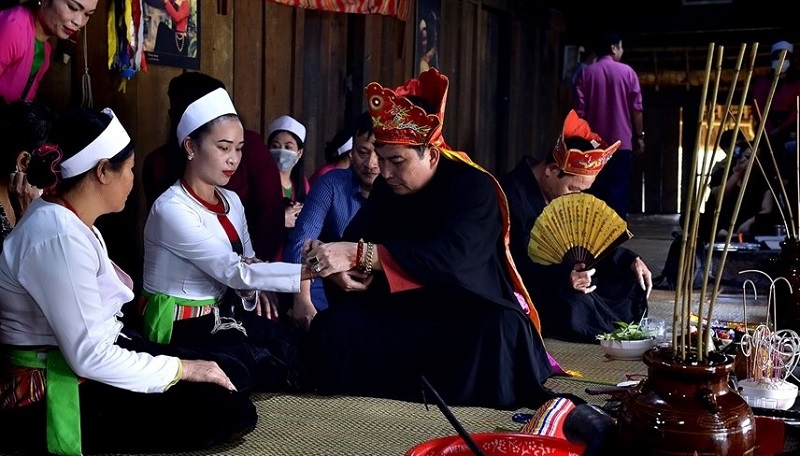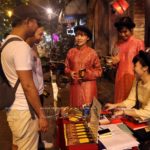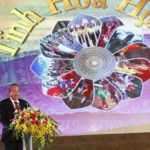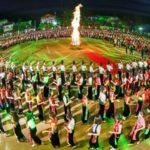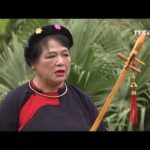The Ministry of Culture, Sports and Tourism has officially recognized the Mo Muong folk performance ritual as a national intangible cultural heritage. This centuries-old tradition is deeply intertwined with the everyday life of the Muong ethnic group residing in the mountainous northwest districts of Ba Vi, Thach That, and Quoc Oai in Hanoi.
The Uniqueness of Mo Muong Ritual
| A Thay Mo, or shaman is practicing the Mo Muong Ritual. Photo: Quan doi Nhan dan Newspaper |
The Mo Muong Ritual, according to Vietnamese folklore researcher Dang Hoanh Loan, is a revered cultural heritage of the Muong ethnic group that is currently facing the threat of extinction.
“This art form is typically carried out by Thay Mo, also known as shamans, who hold a significant position in the spiritual practices of the Muong ethnic community residing in northern Vietnam,” he elaborated.
“It is widely believed that the Muong people, on significant occasions like childbirth ceremonies, house construction, or funerals, experience protection and blessings from their ancestors through the sacred Mo Muong rites,” he added.
A typical Mo Muong ritual typically involves three key components: the “Mo words,” the worship ritual, and the Mo practitioner.
Thay Mo holds a distinguished position among his people and is highly regarded for his exceptional abilities. Remarkably, this individual is recognized as a “living treasure” of the Muong ethnic minority, possessing the unique skill of recounting the history of this ethnic group in a vivid and precise manner through thousands of rhymed verbalisms.
| The gong performance is ussually performed in a Mo Muong Ritual of Muong ethnic minority. Photo: Quan doi Nhan dan Newspaper |
Thay Mo recites various “Mo words” as part of different rituals such as funerals, prayers for peace, or housewarming celebrations. These “Mo words” are traditionally passed down orally among Mo practitioners. One of the most famous among them is the epic “De dat – de nuoc” or “the births of land and water”.
The epic, which consists of an extensive collection of tens of thousands of verses, is frequently recited during funeral ceremonies. It intricately weaves together the narrative of the Muong ethnic group’s inception, historical journey, and evolution from ancient times to the present day.
The HTML content portrays the immense value of the work as a folklore masterpiece, highly regarded by local experts in literature, ethnology, linguistics, and folk art. It offers a comprehensive glimpse into the life and worldview of Vietnam’s Muong ethnic group.
The work was executed and captured digitally in 2008, later released on DVD and produced in book format.
The renowned epic has been previously translated into the national language and incorporated into the curriculum of high schools in Vietnam as a significant piece of folklore literature, comparable to the Kieu Tales authored by Nguyen Du.
“The Mo Muong ritual has played a significant role in shaping the wholesome lifestyle and cultural richness of the Muong ethnic community over the course of history,” stated esteemed folklore researcher Dang Hoanh Loan. This ritual has not only helped in safeguarding and nurturing the Muong culture, but has also been instrumental in their cultural evolution.”
The Mo Muong heritage is predominantly observed among the Muong ethnic communities residing in six regions of northern and central Vietnam, namely Ninh Binh, Phu Tho, Son La, Thanh Hoa, Dak Lak, and Hanoi.
This week, the Ministry of Culture, Sports and Tourism has officially recognized it as one of the newly-listed national intangible cultural heritages. This prestigious designation encompasses a diverse range of folklore ceremonies, festivals, and performances.
The intangible cultural heritage items have been categorized into four distinct groups: traditional handicrafts, traditional festivals, social practices and beliefs, and folk knowledge.
According to the Ministry of Culture, Sports and Tourism, in order for a form of intangible cultural heritage to be recognized as a national intangible cultural heritage, it must satisfy certain criteria. These criteria include the representation of community and local identity, the reflection of cultural diversity and human creativity, the transmission through generations, the potential for revival and long-lasting preservation, as well as garnering public consensus, nomination, and commitment to protection.
The acknowledgment is a crucial step in the process of establishing the portfolio for the national intangible cultural heritages, with the ultimate goal of being included on the UNESCO list as globally endangered intangible cultural heritages in need of safeguarding.
| The space of Da Trach Temple in Khoai Chau District, Hung Yen Province. Photo: Hung Yen Tourism |
The list additionally comprises of two festivals held at the temples of Ky Yen and Nguyen Trung Truc, located in the southern provinces of Binh Duong and Kien Giang respectively, as well as two more festivals celebrated at Da Trach and Da Hoa in the northern province of Hung Yen.
Nam Dinh Province hosts the Thai Binh Song Festival, while An Giang Province is known for the Cham Islam Life Cycle Ritual. Ninh Thuan Province is home to the Raglai people and their new rice celebration, and in Quang Nam Province, the ancient city of Hoi An celebrates the Lunar New Year festival.

